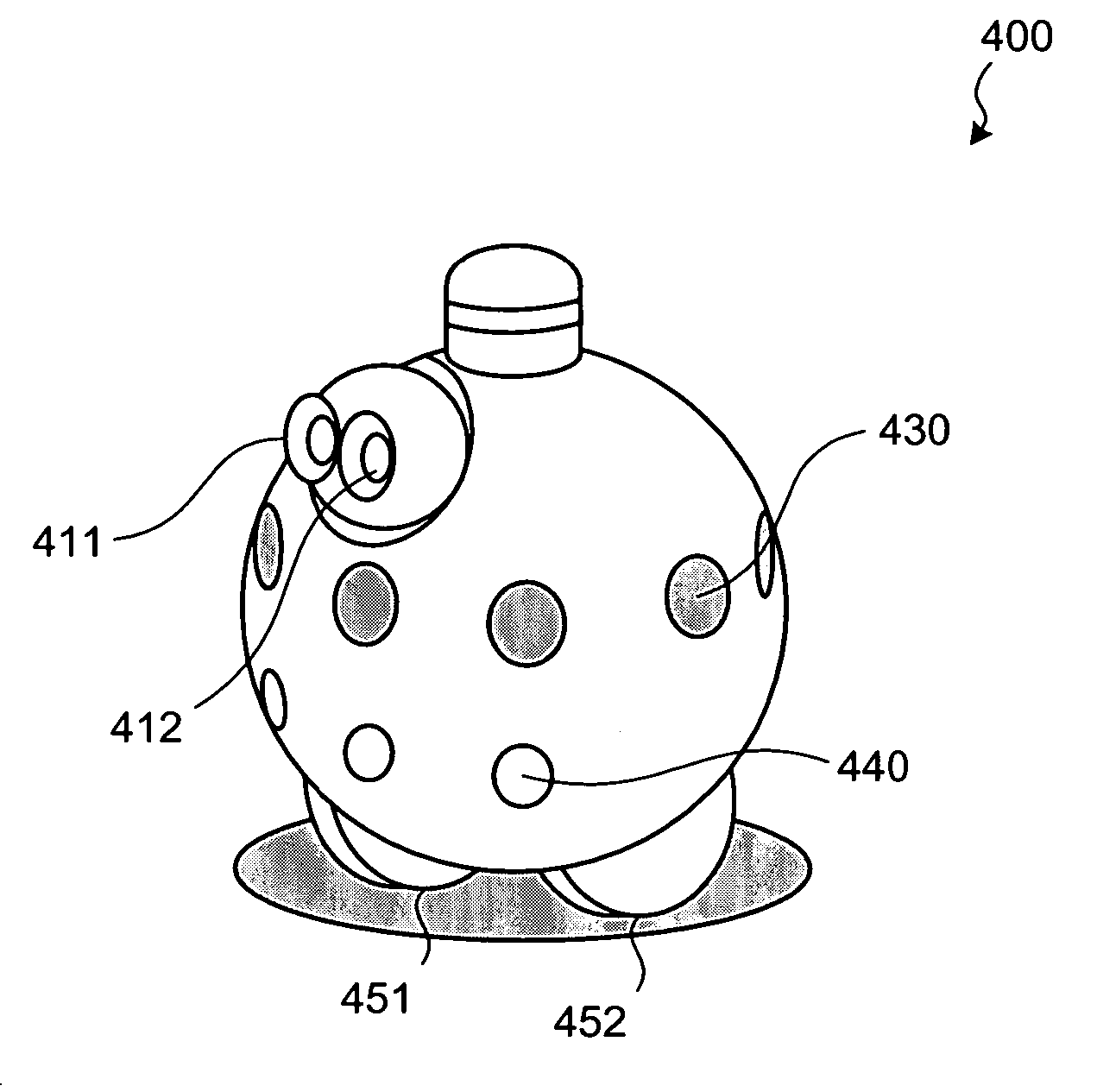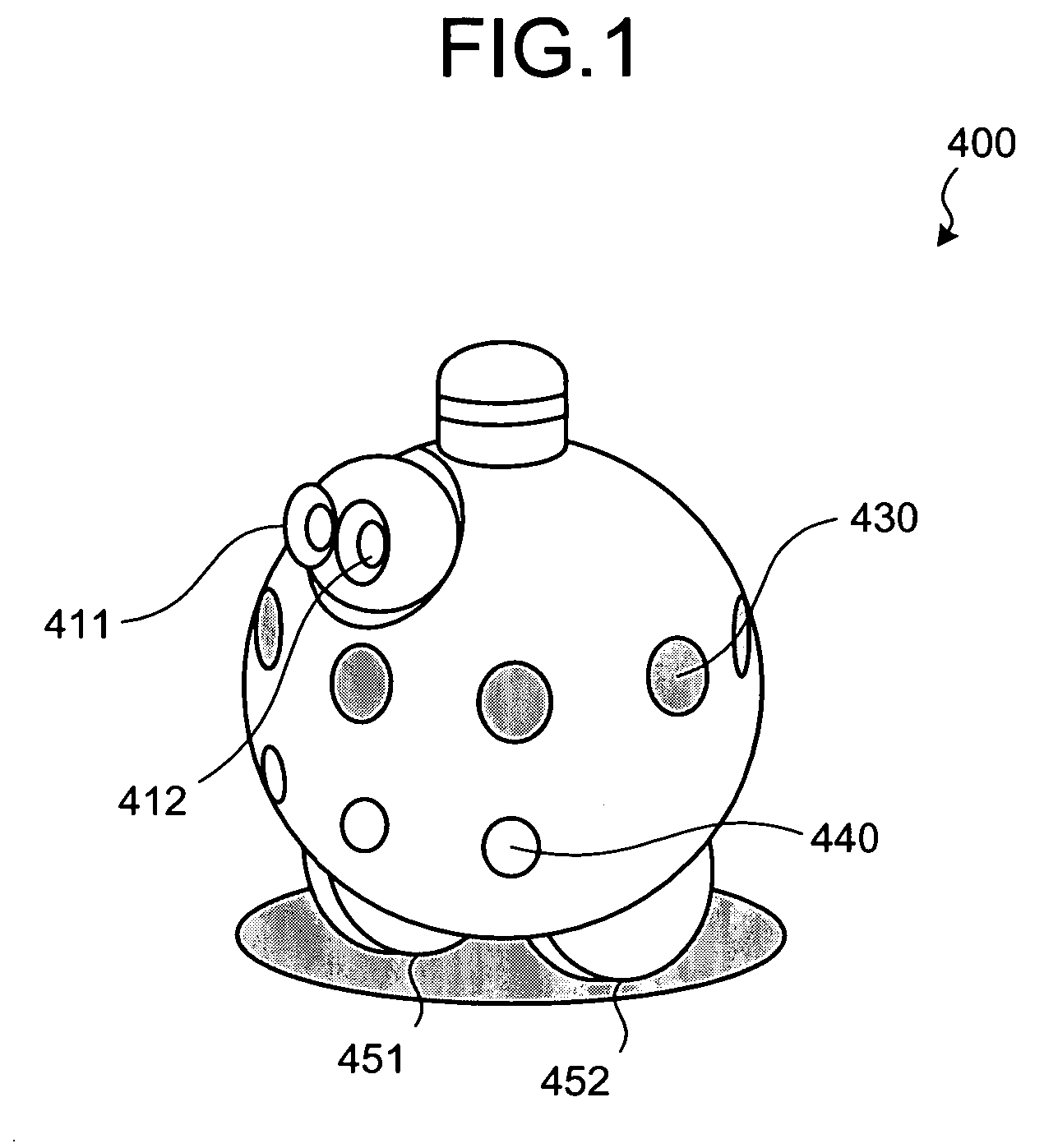Interactive robot, speech recognition method and computer program product
a robot and speech recognition technology, applied in the field of interactive robots, can solve the problems of not being able to distinguish the target voice from the noise, not being able to move according to instructions, and being unable to achieve the above method,
- Summary
- Abstract
- Description
- Claims
- Application Information
AI Technical Summary
Benefits of technology
Problems solved by technology
Method used
Image
Examples
first embodiment
[0034]FIG. 1 is an external view of an interactive robot 400 according to a The interactive robot 400 recognizes the content of an instruction by speech recognition when a human being produces voices for the content of the instruction. Then, the robot executes the content of the instruction. For example, when an instruction of “move right” is given, the robot executes speech recognition of a phrase of “move right”, and is actually moved to the right.
[0035]The interactive robot 400 is provided with charge-coupled-device (CCD) cameras 411 and 412, an array of microphones 430, an ultrasonic sensor 440, and wheels 451 and 452 for moving.
[0036]The microphone array 430 is an image sensor. As the two CCD cameras 411 and 412 are provided, a distance can be calculated, using stereoscopic vision.
[0037]The microphone array 430 includes a plurality of voice microphones. The receiving circuit of each voice microphone has a signal amplifying device (will be described later) using an operational ...
second embodiment
[0134]Thus, the interactive robot 400 can judge, based on camera images acquired by the CCD cameras 411 and 412, whether voice signals has been exactly acquired. Moreover, it can be judged, based on the above judgment result, whether the interactive robot 400 is required to be moved in the direction of the interlocutor.
[0135]Though the present invention has been explained as described, using the embodiments, various kinds of modifications, or improvements can be added to the above-described embodiments.
[0136]As a first modification, there may be applied a configuration, in which, different from that of the above embodiments, the CCD cameras 411 and 412 regularly form images of an interlocutor, and mouth movement is detected in the images, though speech recognition of the communication starting key word has been a condition, by which processing is started, in the above embodiments.
[0137]Further, as a second modification, there may be applied a configuration, in which a series of pro...
PUM
 Login to View More
Login to View More Abstract
Description
Claims
Application Information
 Login to View More
Login to View More - R&D
- Intellectual Property
- Life Sciences
- Materials
- Tech Scout
- Unparalleled Data Quality
- Higher Quality Content
- 60% Fewer Hallucinations
Browse by: Latest US Patents, China's latest patents, Technical Efficacy Thesaurus, Application Domain, Technology Topic, Popular Technical Reports.
© 2025 PatSnap. All rights reserved.Legal|Privacy policy|Modern Slavery Act Transparency Statement|Sitemap|About US| Contact US: help@patsnap.com



